Photographs by Alfred F. Ross
Up close and magnified, they look like something out of your worst nightmare, but at a respectable distance they are shimmering, beautiful creatures. They are the jewels of Georgica Pond, also called Damselflies and Dragonflies, insects belonging to the order Odonata. They are characterized by very large compound eyes and long thin abdomens. They are always near water as their lifecycle includes an aquatic nymph stage. In fact, most of their life is spent as a nymph in the water. An ancient and diverse order (some 5,000 species), the earliest Odonate fossils date from 250 million years ago.
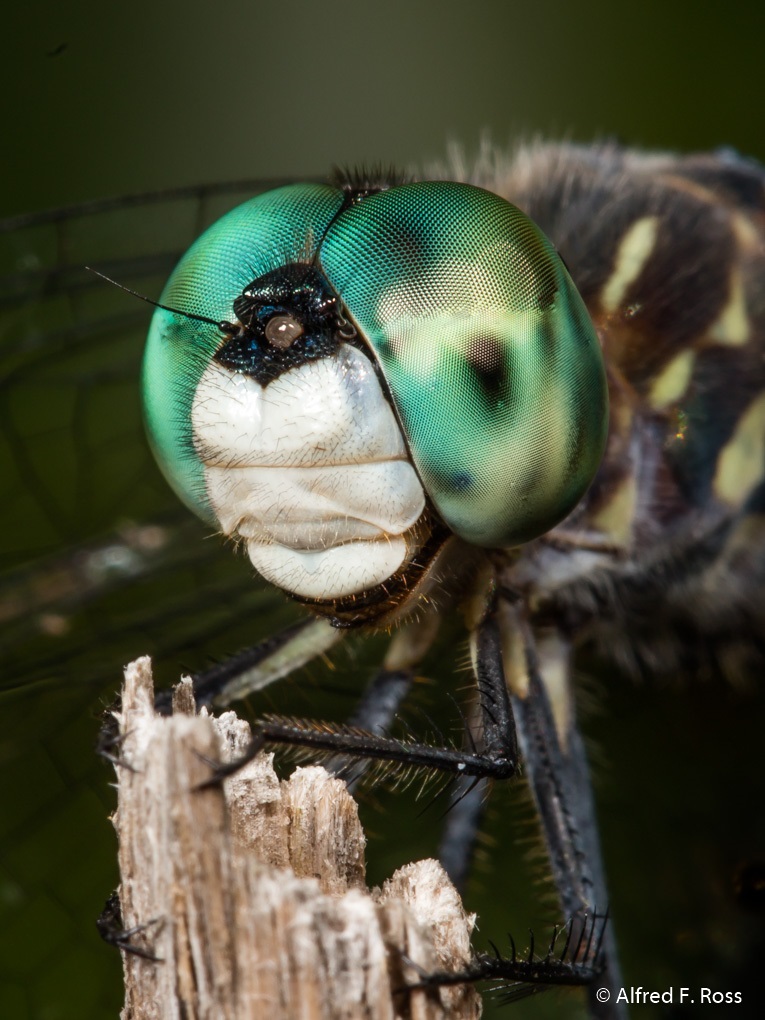
There are many species commonly found at Georgica Pond including: blue darner, blue dasher, eastern pondhawk, eastern amberwing and the Halloween pennant, to name a few.
Hawks of the Insect World
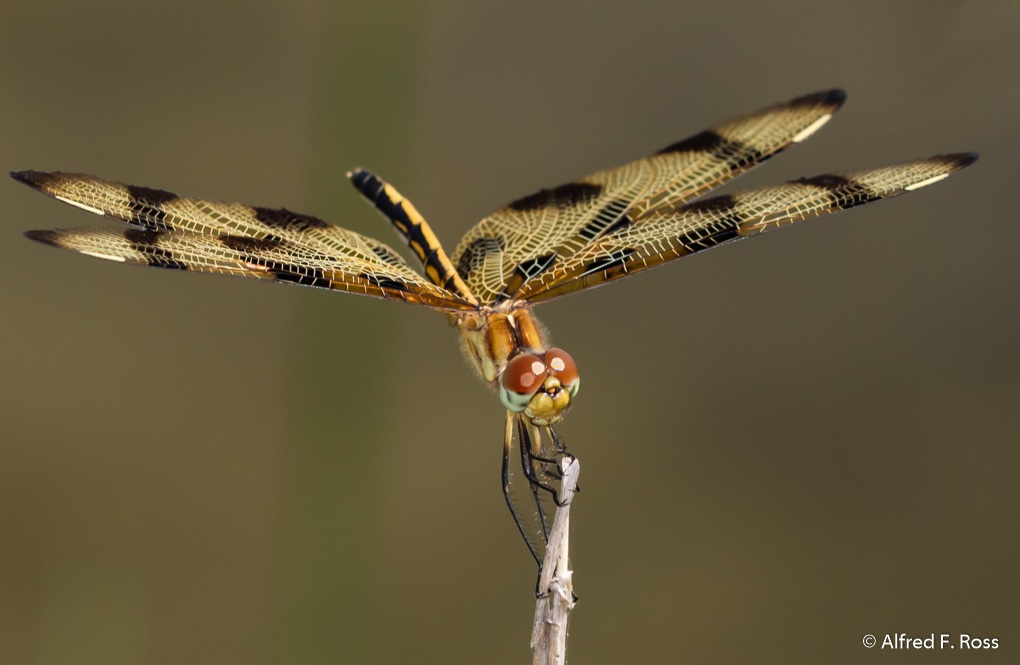
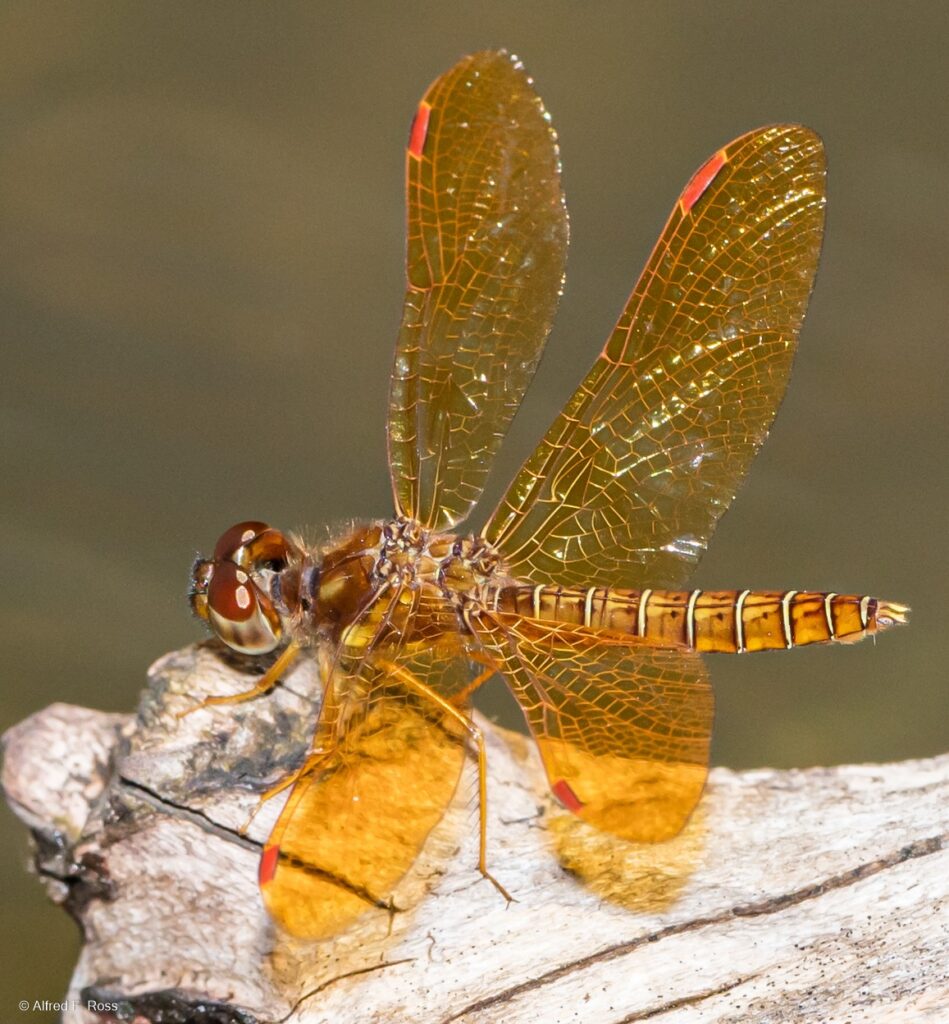
Like miniature helicopters, they hover and dart around the pond hunting for food. They can fly forward and backward and some can reach an amazing 35 mph. Serious predators, their favorite prey is small insects including mosquitoes!
Beneficial and Threatened

You can often see them perched on the stem or leaf of emergent wetlands plants along the shoreline. They are not very tolerant of pollution so when you find them, it is an indication that the water quality and habitat are moderately high quality. In New York State, the DEC ranks eleven species high priority “Species of Greatest Conservation Need” and an additional 27 are in need of conservation. Water and air pollution (including the widespread use of insecticides) and habitat loss are the main threats to their existence. Damselflies and dragonflies are beneficial insects and pose no threat to humans—they do not sting.
What is the difference between a damselfly and a dragonfly?
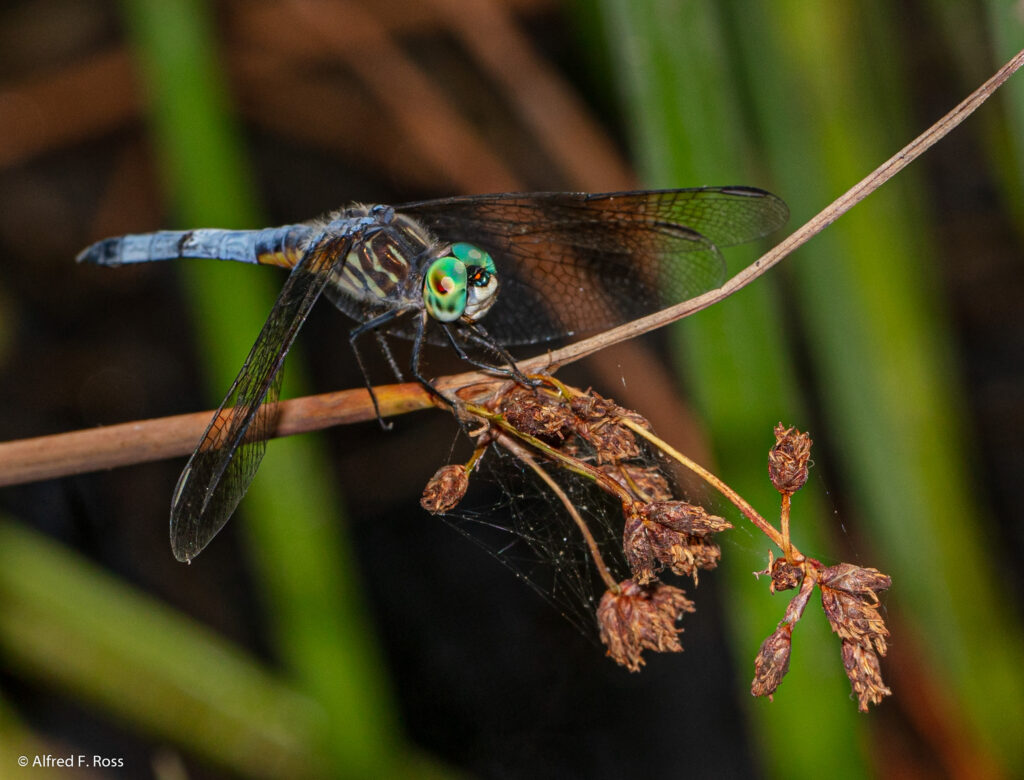
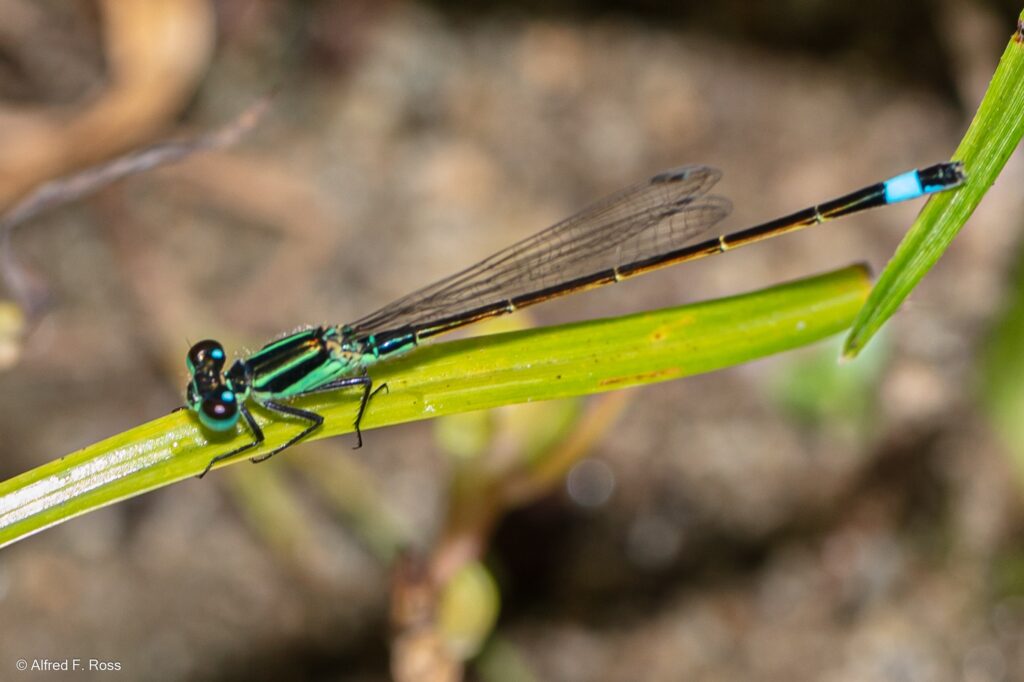
It is fairly easy to tell the difference between a dragonfly and a damselfly. Damselflies have hinged wings and are able to fold them when resting. Dragonflies keep their wings open or rigid when they land. Their remarkable compound eyes are also different, with the dragonfly’s eyes covering most of its head—almost like a helmet—while the damselfly’s eyes are two separate entities on the sides of the head.
Common Names
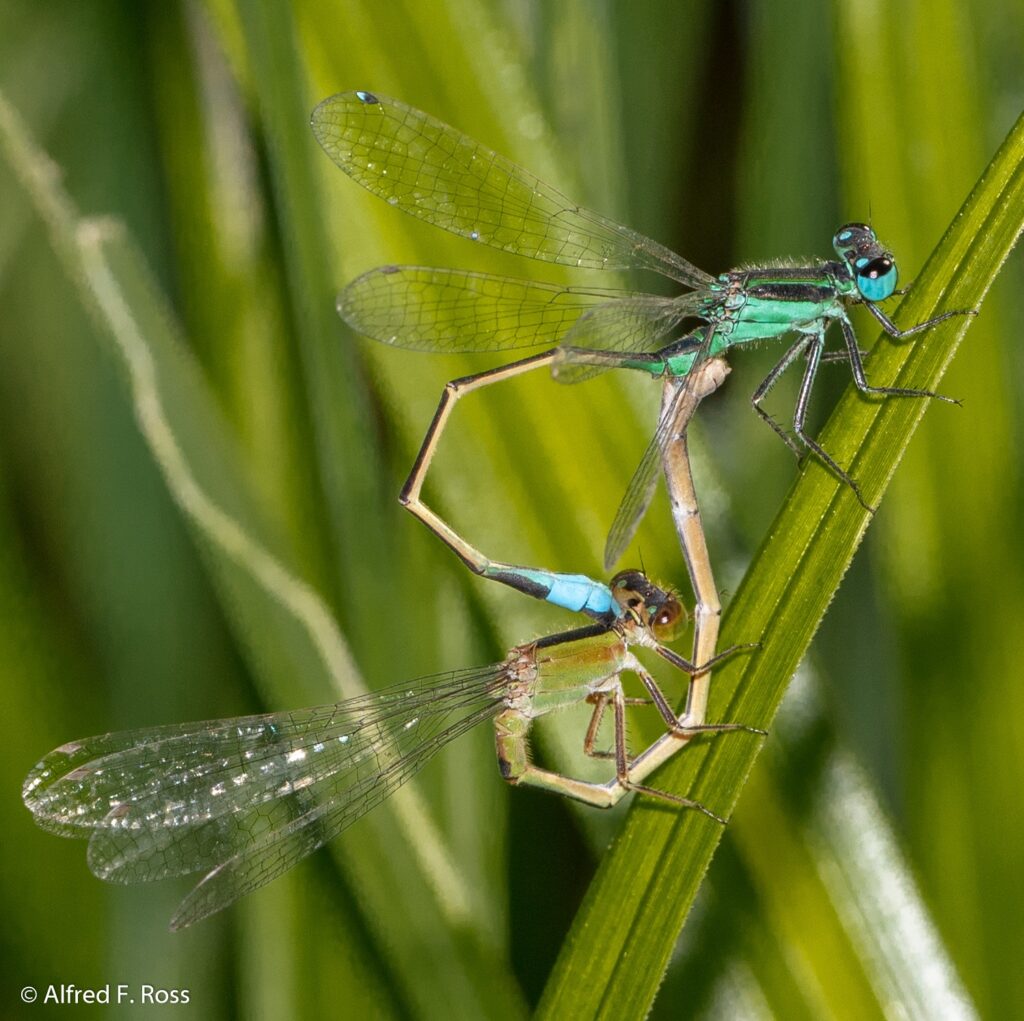
In addition to their stunning jewel-like coloring, they have wonderfully evocative common names. Referencing their long “needle-like” bodies, some are referred to as “darners” or “snaketails” or sometimes their behavior is the inspiration for names such as hawkwing, skimmer, dasher, dancer or glider.
While visiting Georgica Pond this summer, watch for these gorgeous creatures. They are part of the wealth of species that we share the pond with and make it a healthier place for us to enjoy.
Grateful thanks to Erin White, Zoologist & Project Coordinator of the New York Natural Heritage Program for editorial review of this newsletter.
